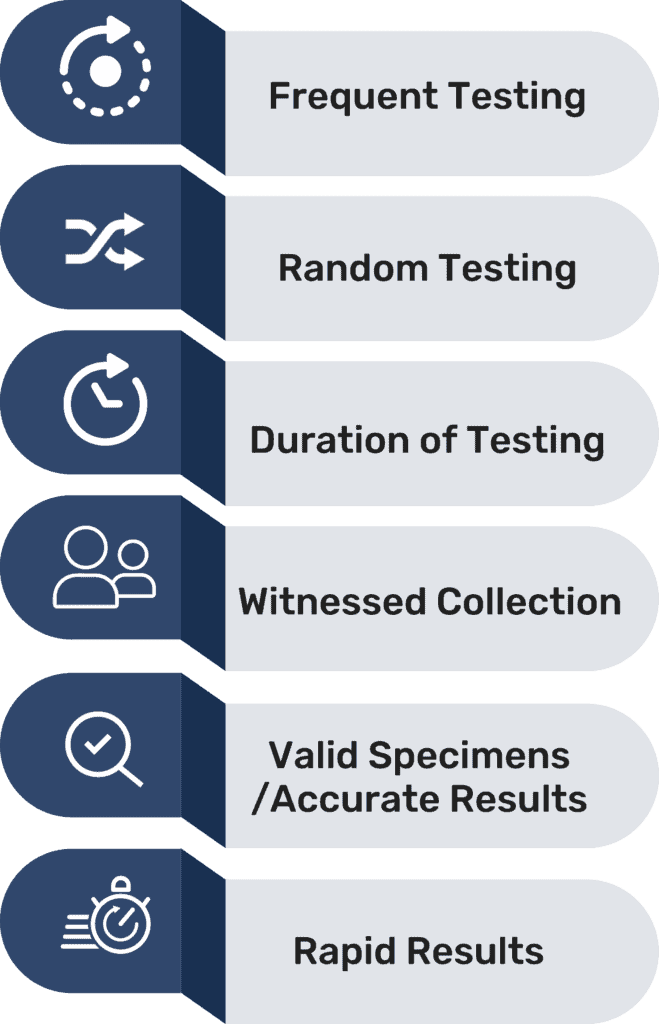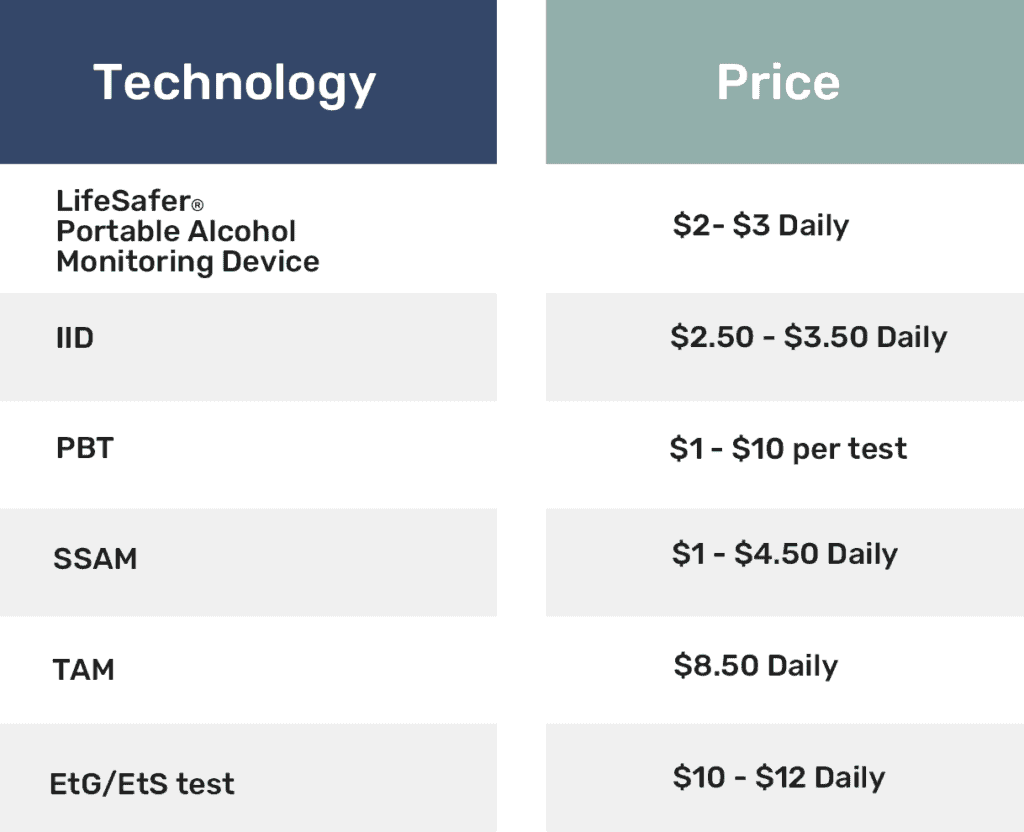Most Effective Choice For Probationary Alcohol Monitoring
The Justice Speakers Institute, LLC (JSI), the preeminent criminal justice organization composed of top judges and criminal justice experts, released a position paper in February 2020, comparing the LifeSafer® Portable Alcohol Monitoring device to other alcohol testing technologies in the industry.
Their research suggests,


BEST PRACTICE CRITERIA
As a means of scientifically comparing the various technologies, the JSI applied the best practice criteria for court-ordered testing as a method to analyze the different technologies. These standards were created for drug treatment courts combining both science and case law to allow for an objective comparison approach.
Here are the technologies that were compared:
- LifeSafer Portable Alcohol Monitoring device (PAM)
- Ignition Interlock Devices (IID) – devices installed in a car
- Portable Breath Testing devices (PBT) – used by law enforcement and probation officers
- Smartphone Semiconductor Alcohol Monitoring devices (SSAM)
- Urine Ethyl Glucuronide and Ethyl Sulfate tests (EtG/EtS) – urine tests
- Transdermal Alcohol Monitoring (TAM) – such as an ankle bracelet
Now that we’ve set the stage, let’s look at Test Frequency first, shall we?
FREQUENT TESTING:
For those who are forbidden to use alcohol by the courts, multiple daily testing has been proven as an effective way of ensuring court requirements are met. Here’s how the six technologies shake out:
- The LifeSafer PAM device has various testing options for low- and high-risk participants with up to 24 tests available daily; scheduled, random, or self-administered.
- IIDs can also be used for multiple daily tests, but the participants must have access to a car in order to take the tests.
- PBTs are inconvenient because of transportation issues, staffing of sites, and time commitments.
- SSAMs can test frequently but not in a short period of time as the semiconductor has to rest. Also, there are accuracy issues with this technology.
- EtG/EtS tests should be conducted daily in order to detect low-level alcohol use, but this can be inconvenient as the labs are location-based and require participant access to transportation daily.
RANDOM TESTING:
When participants progress through their program and less frequent testing is required, it is important that random testing be available for their continued success. See how the technologies stack up in this category:
- The LifeSafer PAM device and IIDs both have options for real-time transmission of data, so random testing can be accommodated and even scheduled by administrators. PBTs can be taken randomly, but it is an inconvenience for the participant.
- EtG/EtS tests have to be scheduled to allow participants to travel to the facility; testing is not random.
- SSAMs have real-time capabilities, however, there are accuracy issues with this technology.
- TAMs are designed to test every 30 minutes, but results are set to transmitted once in a 24-hour period, however, it can be set to more frequent transmission.
DURATION OF TESTING:
All the technologies meet the requirements for long-term probationary testing set by the court. However, SSAMs and EtG/EtS testing have a couple of pitfalls listed below:
- The LifeSafer PAM, IIDs, PBTs, and TAMs can be used for the duration of the probationary period.
- SSAMs can be used but the lifespan of the semiconductor is short and needs more frequent recalibration or possibly even replacement during the probationary period.
- EtG/EtS can be used and there’s no recalibration, obviously, but independent lab confirmation is needed to be admissible.
WITNESSED COLLECTION:
As you might suspect, there are individuals who will attempt to cheat the tests. How do the technologies analyze to prevent this from happening?
- The LifeSafer PAM and IIDs have a wide-angle camera option that reduces the instances of tampering considerably.
- PBTs are most often administered by law enforcement, probation officers, or case managers. No cheating there.
- SSAMs have a camera but it is not wide-angle and the individual’s ability to hold the phone limits effectiveness.
- TAMs are not witnessed and there are numerous attempts to tamper with the device.
- As you can imagine, EtG/EtS is the most vulnerable to tampering. For this reason, both male and female collectors are necessary. This creates a level of embarrassment for the participant.
VALID SPECIMENS/ACCURATE RESULTS:
In order to perform a reliable test to satisfy scientific methodology, obtaining a valid sample is required. This is a deal-breaker as you can see:
- The LifeSafer PAM device, IIDs, and PBTs are all capable of providing valid specimens and accurate results. The first two can detect low levels of alcohol in the breath due to the deep breath method of collecting. PBTs are administered on-site by trained professionals, so they are sufficiently accurate.
- SSAMs take breath-based samples however, semiconductor technology is less accurate, and there’s no way to ensure deep breath sampling.
- EtG/EtS testing is accurate if administered every 12-24 hours. Confirmation by an independent lab is required in order for the results to be admissible.
- While TAMs are designed to test every 30 minutes, they have difficulty reading low-level alcohol amounts, and are less accurate due to the lag time of alcohol into the system.
RAPID RESULTS:
Time is of the essence of alcohol testing. When the court staff receives testing results within 48 hours, there is a 73% chance that alcohol crimes will be reduced. That’s huge! So let’s see which technologies provide timely results:
- The LifeSafer PAM device, IIDs, and SSAMs have the capability to transmit real-time results. It doesn’t get any faster than that!
- PBTs are administered on-site so transmission of results is dependent on the testing agency’s technology.
- TAM results default to being transmitted once in a 24-hour period (although this can be reset to be more frequent), but the individual must be near the base in order for data to be sent.
- EtG/EtS testing takes the longest time as results must be confirmed by an independent lab in order to be admissible.
Outside of the best practices criteria, JSI also took a look at the price. Here’s what they reported:
PRICE:

It was also mentioned that the LifeSafer Portable Alcohol Monitoring device is compact and unobtrusive compared to the other devices and the PAM and some IIDs are NHTSA standards compliant. Overall, the paper concluded that the LifeSafer Portable Alcohol Monitoring device,

To read the full results, download a copy of the Justice Speakers Institute position paper.
You can also download this side-by-side comparison in a handy chart form by clicking below.

